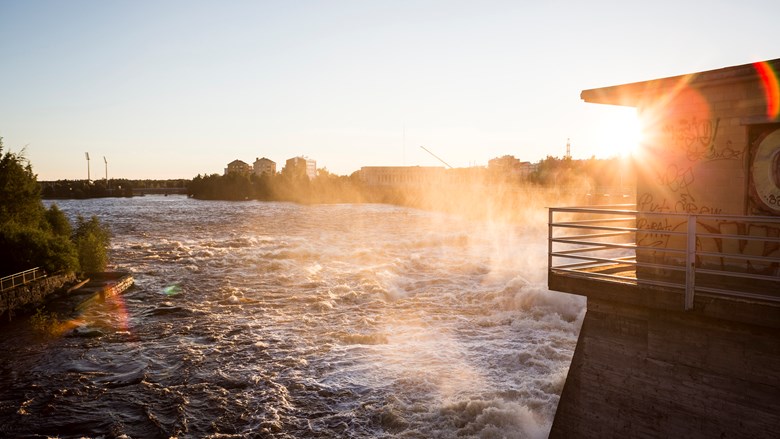Oulun Energia and Fortum conducted a migratory fish breeding ground survey at Oulujoki
The breeding ground survey for migratory fish carried out by Oulun Energia and Fortum in the Oulujoki River has been completed. The study examined the potential breeding grounds of migratory fish in the Oulujoki River and examined the feasibility of proposed fishing industry restoration in the areas under inspection.
The study is related to a wider body of work aimed at strengthening migratory fish stocks and fish cycles in the waters of Oulujoki.
In the case of Oulun Energia, the sites under consideration were the old channel of the Merikoski power plant near the city centre in Oulu, and in the case of Fortum, the bypassing channels of the Montta, Pälli, and Nuojua power plants, the surroundings of the Utanen power plant, the old channels of Jylhämä, and the Poikajoki River.
“The goal was to find out which of the abovementioned sites would best promote the reproduction of migratory fish and the natural cycle in the river. As a result of the survey, information was obtained on the maximum number of salmon produced per breeding ground,” says Katri Hämäläinen, environmental specialist at Fortum.
Many things to be considered
According to Tarja Väyrynen, director of quality and the environment at Oulun Energia, the aim of the study and related cooperation was to look at the mainstem of Oulujoki as a whole.
“The aim of the survey was to see the big picture. All potential breeding grounds in Oulujoki's mainstem have been taken into account in the selection of the sites,” says Väyrynen.
The study paid attention to, among other things, the favourable flow conditions for the reproduction of migratory fish, as well as factors related to the operation of power plants that have an impact on the formation of breeding grounds.
A population model of salmon was used to estimate the rate of natural salmon reproduction. It is based on the Baltic salmon stock assessment model, to which assumptions have been added based on studies and expert assessments of the different stages of the salmon life cycle in inland waters. The same population model is also used in the ARVOVESI project to study of the effects of different measures on the reproductive potential of salmon in the entire Oulujoki basin.
“This simple model can be used to assess the effects of various regulation, rehabilitation, and recovery measures in dammed river basins, which makes it a tool for decision-making between different policy options,” says Pauliina Louhi, a special researcher at the Natural Resources Institute Finland.
The survey supports work on the ARVOVESI project
The study, which has now been completed, is of a preliminary nature, which provides a good basis for possible further work. Based on this, it is possible to assess which sites might be worth taking a closer look at.
The results of the survey will be made available to the ongoing Oulujoki ARVOVESI project. The aim of the project is to produce a hydrological vision that reconciles the objectives of water management, hydropower, fisheries, area usage, and industry in the Oulujoki river basin. Together with other stakeholders, the municipalities, authorities, and Fortum and Oulun Energia will explore ways to develop the river basin area to coordinate both natural fish stocks and hydroelectric power production.
“The report supports work on the ARVOVESI project well and offers valuable new information on the sites examined for future use,” Hämäläinen and Väyrynen say.
Read the preliminary report:
Preliminary report on the technical feasibility and costs of fishing industry rehabilitation in Oulujoki
